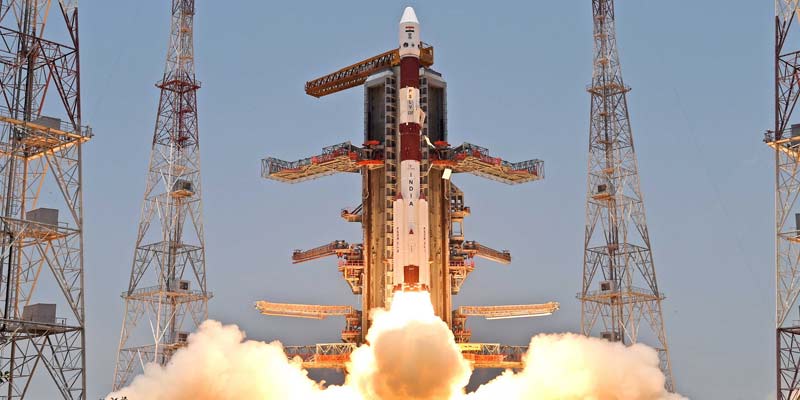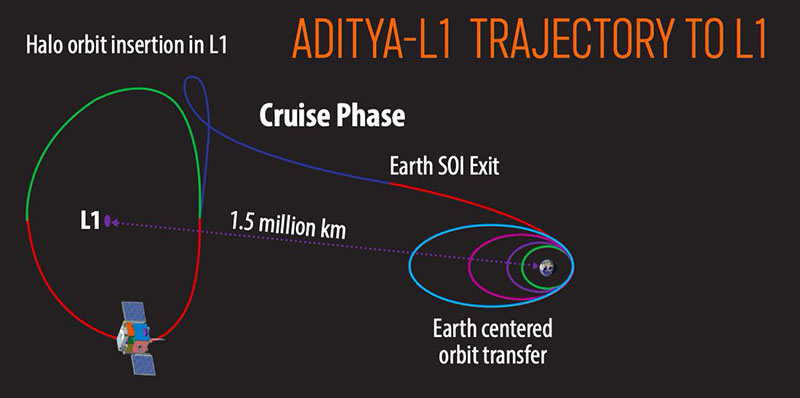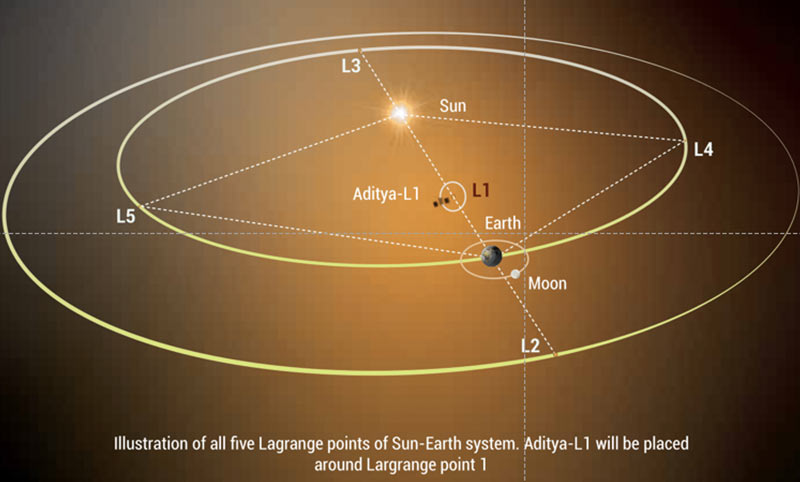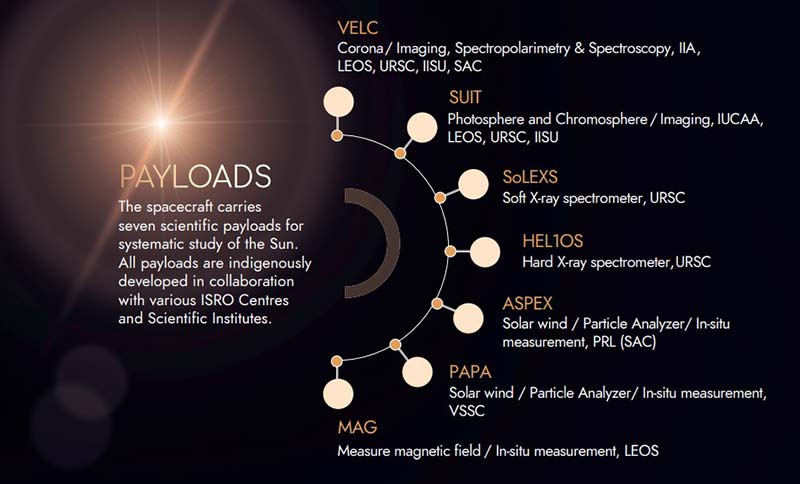- India
- Sep 02
ISRO launches Aditya-L1 solar mission
• ISRO successfully launched India’s maiden solar mission — Aditya-L1 — onboard Polar Satellite Launch Vehicle (PSLV-C57) from Satish Dhawan Space Centre SHAR (SDSC-SHAR), Sriharikota on September 2.
• Aditya-L1, weighing about 1,480.7 kg, is the first space-based Indian observatory to study the Sun.
• PSLV-C57 is the 59th flight of PSLV and 25th mission using PSLV-XL configuration.
• Aditya-L1 will neither land on the Sun nor approach it any closer.
• It is expected to travel for about 125 days to reach the halo orbit around the Lagrangian Point L1.
• Initially the spacecraft will be placed in a Low Earth Orbit. Subsequently, the orbit will be made more elliptical and later the spacecraft will be launched towards L1 by using on-board propulsion.
• As the spacecraft travels towards L1, it will exit the Earth’s gravitational Sphere of Influence (SOI).
• After exit from SOI, the cruise phase will start and subsequently the spacecraft will be injected into a large halo orbit around L1.
• The total travel time from launch to L1 would take about four months for Aditya-L1.
• The Aditya-L1 mission carries seven scientific payloads to carry out the study.
What are Lagrange Points?
• Lagrange Points are named in honor of Italian-French mathematician Joseph-Louis Lagrange.
• For a two body gravitational system, the Lagrange Points are the positions in space where a small object tends to stay, if put there.
• At Lagrange Points, the gravitational pull of two large masses precisely equals the centripetal force required for a small object to move with them. These points in space can be used by spacecraft to reduce fuel consumption needed to remain in position.
• There are five Lagrangian points between the Sun and the Earth, and the L1 point in the Halo orbit would provide a greater advantage of continuously viewing the Sun without any occurrence of eclipse.
• Aditya-L1 will stay approximately 1.5 million km away from the Earth, directed towards the Sun, which is about 1 per cent of the Earth-Sun distance.
Aditya-L1 payloads
Aditya-L1 mission carries seven scientific payloads to carry out the study.
i) Visible Emission Line Coronagraph: VELC is the prime payload designed as a reflective coronagraph with a multi-slit spectrograph. VELC would be sending 1,440 images per day to the ground station for analysis on reaching the intended orbit. VELC was integrated, tested, and calibrated at the Indian Institute of Astrophysics CREST (Centre for Research and Education in Science Technology), campus in Hoskote near Bengaluru with substantial collaboration with ISRO.
ii) Solar Low Energy X-ray Spectrometer: SoLEXS is a soft X-ray spectrometer designed to measure the solar soft X-ray flux to study solar flares.
iii) Plasma Analyser Package for Aditya: PAPA is designed to understand solar winds and its composition and do mass analysis of solar wind ions.
iv) High Energy L1 Orbiting X-ray Spectrometer: HEL1OS is a hard X-ray spectrometer designed to study solar flares in the high energy X-rays.
v) Solar Ultraviolet Imaging Telescope: SUIT is a UV telescope to image the solar disk in the near ultraviolet wavelength range.
vi) Aditya Solar wind Particle EXperiment: ASPEX payload comprises two sub-systems: SWIS and STEPS. Solar Wind Ion Spectrometer (SWIS) is a low-energy spectrometer designed to measure the proton and alpha particles of the solar wind. Suprathermal and Energetic Particle Spectrometer (STEPS) is a high-energy spectrometer designed to measure high-energy ions of the solar wind.
vii) Magnetometer: MAG will measure the low intensity interplanetary magnetic field in space.It has two sets of magnetic sensors: one at the tip of a 6 meter deployable boom, and the other in the middle of the boom, 3 meters away from the spacecraft.
Why study the Sun from space?
• The Sun emits radiation/light in nearly all wavelengths along with various energetic particles and magnetic field. The atmosphere of the Earth as well as its magnetic field acts as a protective shield and blocks a number of harmful wavelength radiations including particles and fields.
• As various radiations don’t reach the surface of the Earth, the instruments from the Earth will not be able to detect such radiation and solar studies based on these radiations could not be carried out.
• However, such studies can be carried out by making observations from outside the Earth atmosphere, that is from space.
• Similarly, to understand how the solar wind particles and magnetic field from the Sun travel through the interplanetary space, measurements are to be performed from a point which is far away from the influence of the Earth’s magnetic field.
Manorama Yearbook app is now available on Google Play Store and iOS App Store




